Adaptive predictive principal components for modeling multivariate air pollution
- PMID: 32581623
- PMCID: PMC7313718
- DOI: 10.1002/env.2525
Adaptive predictive principal components for modeling multivariate air pollution
Abstract
Air pollution monitoring locations are typically spatially misaligned with locations of participants in a cohort study, so to analyze pollution-health associations, exposures must be predicted at subject locations. For a pollution measure like PM2.5 (fine particulate matter) comprised of multiple chemical components, the predictive principal component analysis (PCA) algorithm derives a low-dimensional representation of component profiles for use in health analyses. Geographic covariates and spatial splines help determine the principal component loadings of the pollution data to give improved prediction accuracy of the principal component scores. While predictive PCA can accommodate pollution data of arbitrary dimension, it is currently limited to a small number of pre-selected geographic covariates. We propose an adaptive predictive PCA algorithm, which automatically identifies a combination of covariates that is most informative in choosing the principal component directions in the pollutant space. We show that adaptive predictive PCA improves the accuracy of multi-pollutant exposure predictions at subject locations.
Keywords: Multicomponent pollution; dimension reduction; partial least squares; prediction; spatial misalignment.
Figures


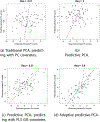

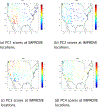
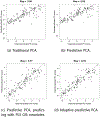
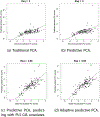
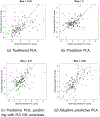
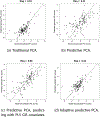
Similar articles
-
Probabilistic predictive principal component analysis for spatially misaligned and high-dimensional air pollution data with missing observations.Environmetrics. 2020 Jun;31(4):e2614. doi: 10.1002/env.2614. Epub 2019 Dec 19. Environmetrics. 2020. PMID: 32581624 Free PMC article.
-
A novel principal component analysis for spatially misaligned multivariate air pollution data.J R Stat Soc Ser C Appl Stat. 2017 Jan;66(1):3-28. doi: 10.1111/rssc.12148. Epub 2016 Apr 6. J R Stat Soc Ser C Appl Stat. 2017. PMID: 28239196 Free PMC article.
-
Assessment and statistical modeling of the relationship between remotely sensed aerosol optical depth and PM2.5 in the eastern United States.Res Rep Health Eff Inst. 2012 May;(167):5-83; discussion 85-91. Res Rep Health Eff Inst. 2012. PMID: 22838153
-
COVARIATE-ADAPTIVE CLUSTERING OF EXPOSURES FOR AIR POLLUTION EPIDEMIOLOGY COHORTS.Ann Appl Stat. 2017 Mar;11(1):93-113. doi: 10.1214/16-AOAS992. Epub 2017 Apr 8. Ann Appl Stat. 2017. PMID: 28572869 Free PMC article.
-
Ambient particulate air pollution and circulating C-reactive protein level: A systematic review and meta-analysis.Int J Hyg Environ Health. 2019 Jun;222(5):756-764. doi: 10.1016/j.ijheh.2019.05.005. Epub 2019 May 16. Int J Hyg Environ Health. 2019. PMID: 31103472
Cited by
-
Probabilistic predictive principal component analysis for spatially misaligned and high-dimensional air pollution data with missing observations.Environmetrics. 2020 Jun;31(4):e2614. doi: 10.1002/env.2614. Epub 2019 Dec 19. Environmetrics. 2020. PMID: 32581624 Free PMC article.
References
-
- Badaloni C, Cesaroni G, Cerza F, Davoli M, Brunekreef B and Forastiere F (2017). Effects of long-term exposure to particulate matter and metal components on mortality in the Rome longitudinal study. Environment International, 109, 146–154. - PubMed
-
- Brook RD, Rajagopalan S, Pope CA, Brook JR, Bhatnagar A, Diez-Roux AV, … Kaufman JD (2010). Particulate matter air pollution and cardiovascular disease: An update to the scientific statement from the American Heart Association. Circulation, 121(21), 2331–2378. - PubMed
Grants and funding
LinkOut - more resources
Full Text Sources
